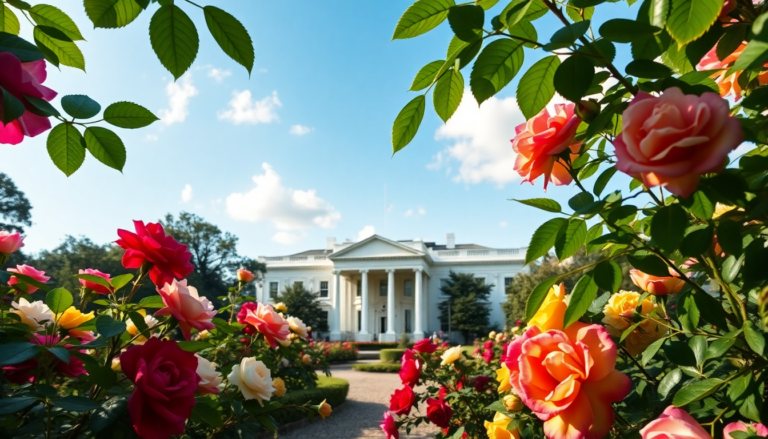Argomenti trattati
“`html
The White House Rose Garden isn’t just a pretty spot; it’s a living piece of American history and culture. Since its inception in 1913, this garden has been the backdrop for countless significant presidential moments—from press conferences to weddings. But recent changes have sparked debates about what the future holds for this iconic landmark. Understanding its rich history can shed light on these current transformations.
A Brief History of the Rose Garden
Established by First Lady Ellen Louise Axson Wilson, the Rose Garden has seen its fair share of transformations over the years, adjusting to the tastes and needs of different administrations. Originally conceived as a relaxing retreat for the president and a venue for informal gatherings, it quickly evolved into a stage for more formal events. Throughout the decades, it has hosted pivotal moments in American history, including presidential announcements and weddings.
Take, for example, the wedding of Tricia Nixon to Edward F. Cox in 1971, a memorable occasion that highlighted the garden’s intimate role for the First Family. The garden’s lush greenery and vibrant blooms have charmed presidents from Jimmy Carter to Barack Obama, each of whom has used it for important public engagements. Isn’t it fascinating how a garden can hold so many stories?
The Recent Changes and Their Implications
Fast forward to June 9, when President Donald Trump unveiled a controversial plan to hardscape the Rose Garden, a decision that was grounded in practicality. In interviews, he voiced concerns about the garden’s functionality, particularly its suitability for press conferences. The shift from a sprawling lawn to a paved area has stirred up mixed feelings, showcasing the ongoing tug-of-war between tradition and modern needs.
This alteration mirrors broader trends in how public spaces are utilized, where functionality often takes center stage over aesthetics. As we navigate these changes, we must ask: what do these modifications mean for the garden’s cultural significance and for future generations? Will it still be a gathering place for historical moments, or risk becoming just another backdrop stripped of its charm?
Reflections on Cultural Significance
The Rose Garden represents much more than a picturesque setting; it symbolizes the evolving nature of American politics and public engagement. Reflecting on its history alongside recent changes, it’s hard not to appreciate the myriad stories it has witnessed. From Lady Bird Johnson nurturing the flowers to President Obama discussing policy with advisors, the garden has quietly participated in the American governance narrative.
As we adapt to new realities, it’s crucial to honor the legacy of this space. How will these changes affect public perception and the way people engage with the White House as a symbol of democracy? Will the new design encourage the same level of connection, or create a divide between the presidency and the public?
Looking Ahead: The Future of the Rose Garden
As we look ahead to the future of the White House Rose Garden, it’s essential to keep the conversation alive about its role in American society. The ongoing changes prompt us to think about how public spaces can evolve while still honoring their heritage. Monitoring how these transformations impact public engagement will be vital to understanding the garden’s position in our national identity.
In conclusion, the transformation of the Rose Garden reflects broader shifts in American politics and public spaces. As we forge ahead, let’s stay engaged with the stories this historic site continues to tell, ensuring it remains a vibrant part of our collective memory. What stories do you think the Rose Garden will tell in the years to come?
“`

